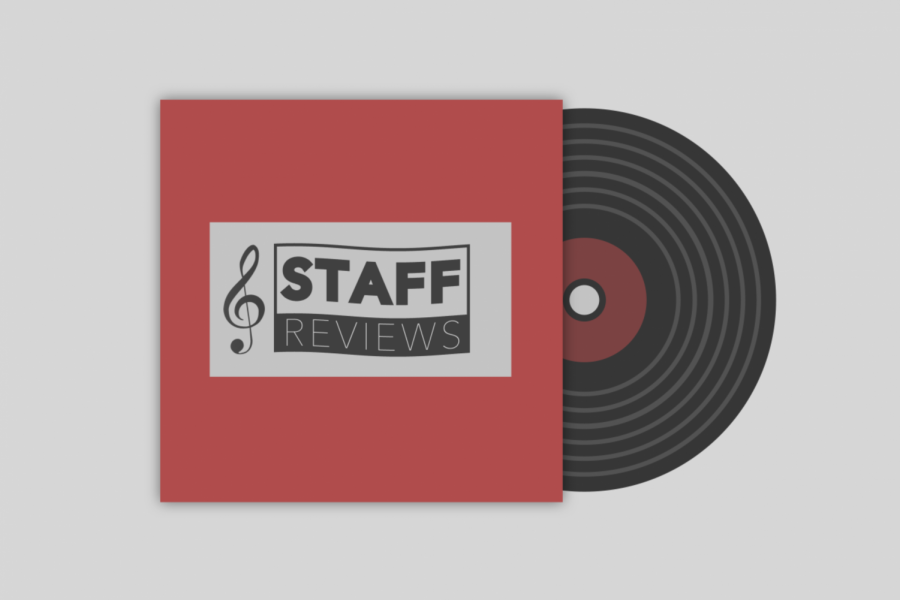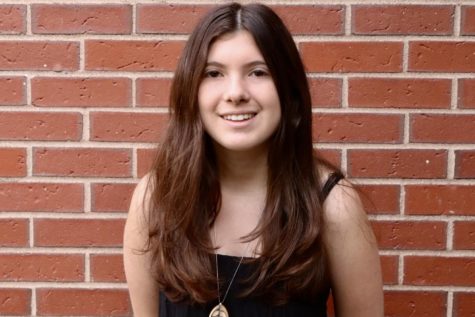Review: Halsey’s “Manic”
In the latest installment of Staff Reviews, WSPN’s Alyssa Dickstein offers a review of “Manic,” the latest release by Halsey.
February 19, 2020
Let’s start with the songs on Halsey’s new album, “Manic,” that exemplify her classic style: “You should be sad.” With only one song on a 16-track-album connecting Halsey’s newest work to her older music, she left plenty of room to explore new genres and experiment with new lyrics.
In “You should be sad,” Halsey explores her distaste with typical relationships and the status quo, the same way she does in her classics “Bad at Love” and “Eastside.” Halsey often refers to love as something she believed in in her youth but has since outgrown. For example, in “Eastside,” she sings “Seventeen and we got a dream to have a family/A house and everything in between/And then, oh, suddenly we turned twenty-three/now we got pressure taking our life more seriously.” Additionally, Halsey regards her experience with relationships with gratitude at having ended them. In “Bad at Love,” Halsey sings, “So I told him the music would be worth the wait/But he wants me in the kitchen with a dinner plate.” Indeed, in “You should be sad,” Halsey addresses both of these themes that have been so influential to her music, singing, “I’m so glad I never ever had a baby with you/‘Cause you can’t love nothing unless there’s something in it for you.”
In “More” and “929,” Halsey references her old material, without actually personifying it. In “More,” Halsey sings about hopelessness, the main topic of her album “hopeless fountain kingdom.” Then, in “929,” Halsey directly references her old romances on the Eastside, a direct reference to her No. 1 hit “Eastside,” a collaboration with Khalid and Benny Blanco. She sings: “Well who am I? I’m almost 25/Can’t remember half the time that I’ve been alive/’Cause half was in a cheap apartment/And half was on the Eastside.”
Experimenting with new genres is a crucial component of “Manic.” In “929,” Halsey utilizes the easy-going, conversational style typically used in early 2000s pop by singing in a light-hearted manner to the echo-y instrumentals of the acoustic guitar. Halsey experiments in new music genres in “3AM” and “Finally//beautiful stranger” as well. In “3AM,” Halsey tries out rock and roll, and in the latter, she debuts her first love song – she sings “Finally, finally, finally, finally safe/For me to fall” as opposed to singing something like “I’m so glad I didn’t fall for you,” which is usually the tone of her music.
Altogether, “Manic” brings together Halsey’s new music and old music in a way that’s fun and easy to listen to.
Rating: 8.5/10
Opinion articles written by staff members represent their personal views. The opinions expressed do not necessarily represent WSPN as a publication.





![Last Wednesday, the Wayland School Committee gathered to discuss a number of topics regarding the health curriculum and Innovation Career Pathway course. Another large topic of conversation was the ways to potentially mitigate distracting cell phone usage. "These [phones] are going to distract your learning and social relationships," Superintendent David Fleishman said. "That's concrete right there."](https://waylandstudentpress.com/wp-content/uploads/2025/06/Screenshot-2025-06-04-at-9.49.31 PM-1200x886.png)



























![Troy Hoyt finishes the Boston Marathon, running for the Hoyt Foundation. T. Hoyt is the son of Hoyt Foundation CEO Russ Hoyt.
“[Running a marathon] might seem like a big thing, when it’s presented to you at first, but if you break it up and just keep telling yourself, “Yes, you can,” you can start chipping away at it. And before you know it, you’ll be running the whole 26 miles, and you won’t even think twice about it.” T. Hoyt said.](https://waylandstudentpress.com/wp-content/uploads/2025/04/C36E8761-1CBB-452E-9DF2-543EF7B1095E_1_105_c.jpeg)













































